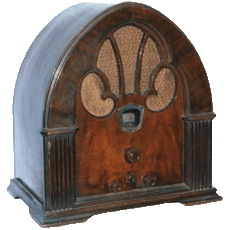01-29-2022, 01:03 PM
Hello to all,
I apologize for bringing this subject up but I need some expert advice on the subject. I have recapped and changed bad resistors etc. Tubes test good. Reading all the threads about the missing dot(s) surrounding C50 here and on other sites I wired in one 22uf cap for C50 and slowly brought the unit up to power with a variance. It worked well pulling in local stations and at night I was impressed with the DX reception. However, I noticed that my voltages on the tubes listed in service bulletin #197 were a lot higher than those listed in the table ie: 340v on the 6A7 vs 260v, the other tubes were higher as well. Also I noticed a spark when moving the tone control switch to bring in the higher value cap (yes I had replaced these caps). So, I decided to install two separate caps for C50 and wire them separately per the earlier thread posted by klondike98 a few years ago. So now the pos side of C50a goes to the filament of tube 80 and the pos side of C50b goes to R28 et al. The set still pulls in local stations and DX, the tube voltages are a lot closer to those listed in the service bulletin and the arcing went away from the tone switch but now it is hyper sensitive to the scratchiness of the volume pot and other transient noise. I plan on replacing the volume pot/switch next. Anyway, so which way is the correct wiring as it works in both configurations except running higher voltages at the tubes? Sorry for the long thread, this has been a complicated repair and stopped being fun weeks ago. Thanks in advance for everyone’s time and help.
I apologize for bringing this subject up but I need some expert advice on the subject. I have recapped and changed bad resistors etc. Tubes test good. Reading all the threads about the missing dot(s) surrounding C50 here and on other sites I wired in one 22uf cap for C50 and slowly brought the unit up to power with a variance. It worked well pulling in local stations and at night I was impressed with the DX reception. However, I noticed that my voltages on the tubes listed in service bulletin #197 were a lot higher than those listed in the table ie: 340v on the 6A7 vs 260v, the other tubes were higher as well. Also I noticed a spark when moving the tone control switch to bring in the higher value cap (yes I had replaced these caps). So, I decided to install two separate caps for C50 and wire them separately per the earlier thread posted by klondike98 a few years ago. So now the pos side of C50a goes to the filament of tube 80 and the pos side of C50b goes to R28 et al. The set still pulls in local stations and DX, the tube voltages are a lot closer to those listed in the service bulletin and the arcing went away from the tone switch but now it is hyper sensitive to the scratchiness of the volume pot and other transient noise. I plan on replacing the volume pot/switch next. Anyway, so which way is the correct wiring as it works in both configurations except running higher voltages at the tubes? Sorry for the long thread, this has been a complicated repair and stopped being fun weeks ago. Thanks in advance for everyone’s time and help.



![[-] [-]](https://philcoradio.com/phorum/images/bootbb/collapse.png)


